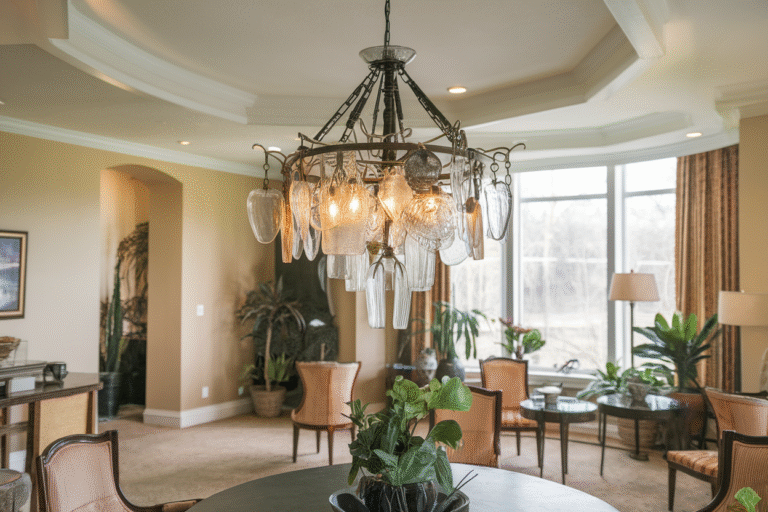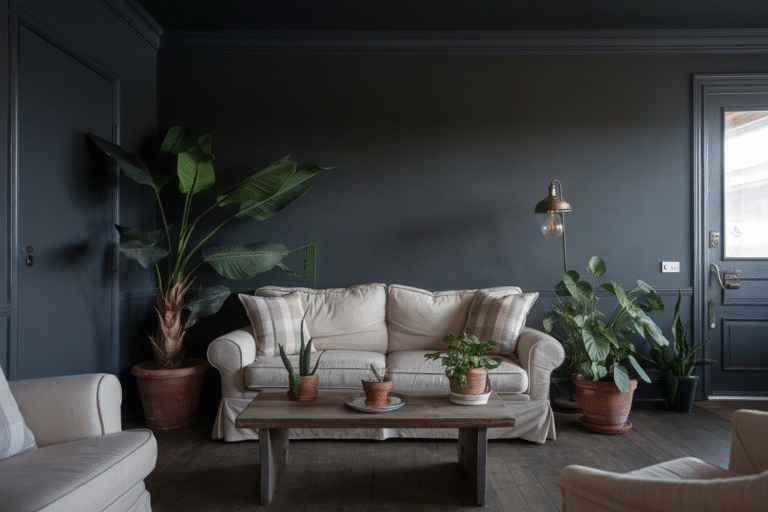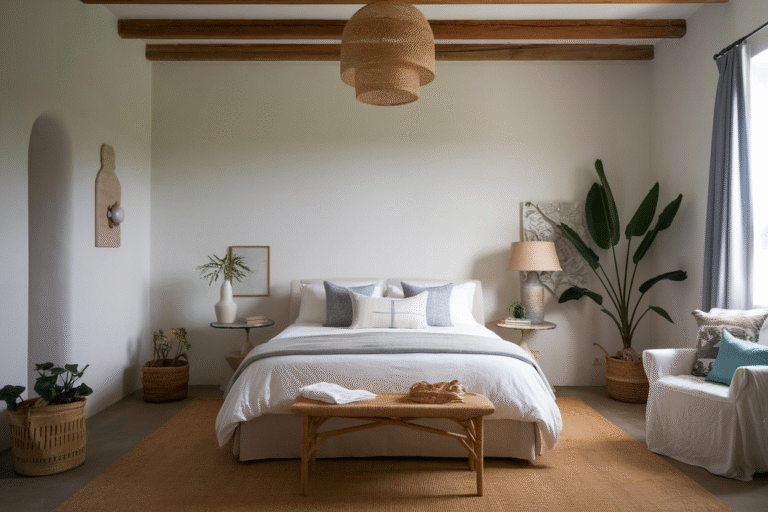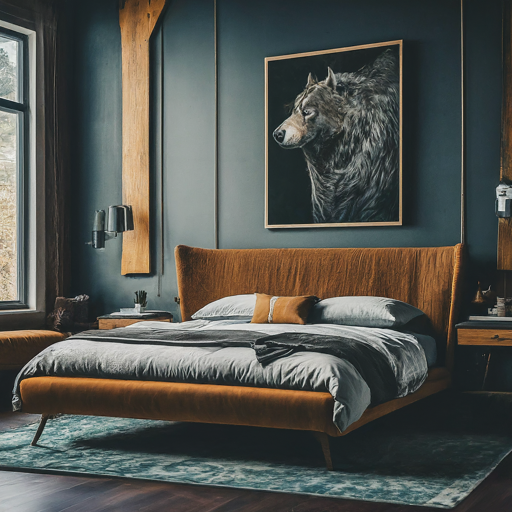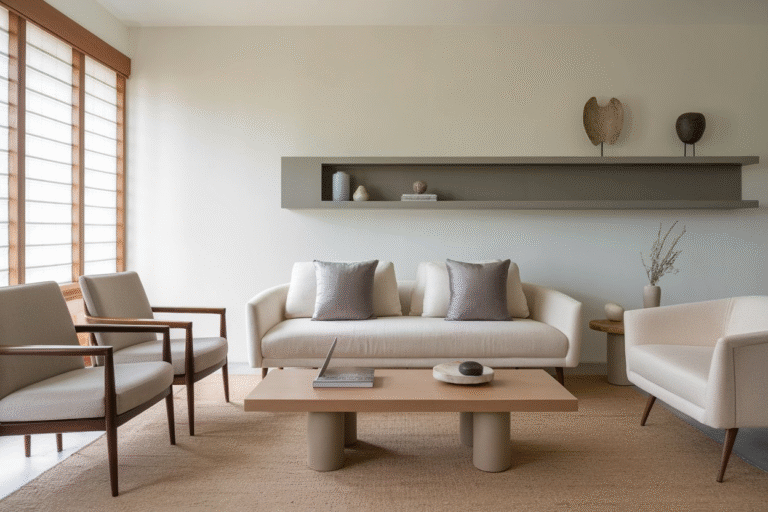19 Mobile Home Living Room Ideas
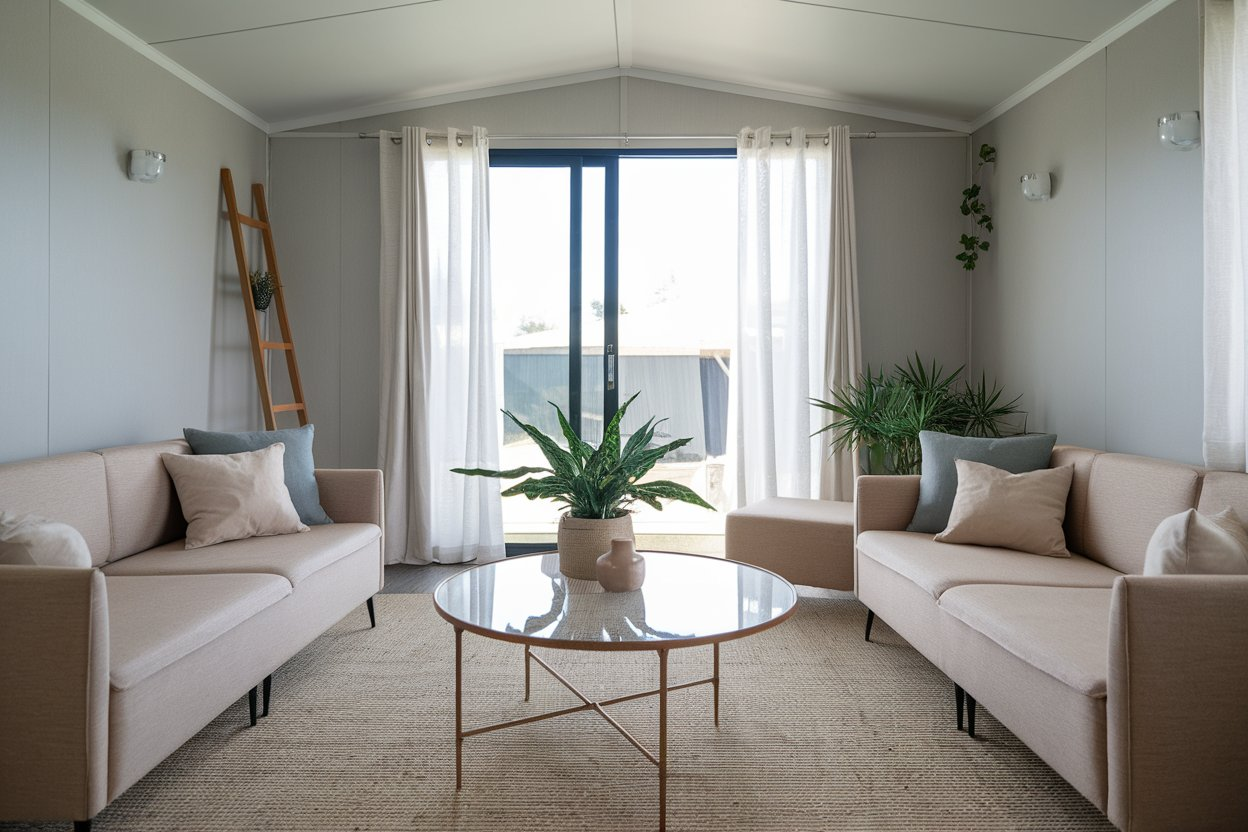
There’s something incredibly charming about mobile homes. Maybe it’s the cozy corners or the way every inch matters, but when it comes to living room design, they force us to get creative. If you’re feeling boxed in by your square footage or just tired of a bland layout, you’re not alone.
I’ve spent time in mobile homes that felt more luxe than downtown apartments, and others that needed a serious facelift. The good news? With a few clever tweaks, a mobile home living room can feel open, stylish, and genuinely inviting.
1. Maximize Vertical Space with Floating Shelves
Think of your walls as underused goldmines. Instead of bulky bookcases, opt for floating shelves. They add height, visual interest, and essential storage without swallowing floor space. Whether it’s books, plants, or framed memories, floating shelves draw the eye upward, making your mobile living room feel taller and roomier.
I once helped a friend transform her double-wide with just two sets of shelves above her couch. The result? Magazine-worthy.
2. Lighten Up with a Soft Color Palette
If you’ve ever walked into a mobile home with dark wood paneling, you know how it can feel like a cave. Switch it up with light, airy colors—think warm whites, soft grays, pale blues, or muted greens. Lighter tones reflect natural light and visually expand small spaces.
Paint is the cheapest, most dramatic change you can make. My first mobile home had pea-green walls (not the good kind), and after one weekend and a gallon of off-white, it felt brand new.
3. Use a Sectional—Yes, Really
Most people assume sectionals are off-limits in mobile homes, but the right one can actually be a space saver. Look for compact L-shaped sectionals with hidden storage or a chaise that lifts. These maximize seating and functionality.
In a single-wide with an open floor plan, a small sectional can help define the living room space without needing walls or dividers.
4. Add a Statement Rug to Define the Area
A bold area rug does more than warm your toes—it anchors your space and creates visual boundaries. This is especially important if your mobile home has an open concept or flows into a kitchen or hallway.
Choose a rug that fits just under your main furniture pieces, not one that hugs the coffee table alone. It brings unity and instantly makes your living room feel finished.
5. Opt for Multifunctional Furniture
In mobile homes, everything has to earn its keep. Your coffee table? Let it have drawers. Your ottoman? Make sure it stores blankets. A lift-top coffee table becomes a dinner table or workspace in a snap.
One of my best space-saving moves was buying a storage bench that moonlighted as a TV console. Guests never knew it hid the chaos inside.
6. Let the Light In—Natural and Otherwise
If your mobile home living room has small or oddly placed windows, don’t block them with heavy drapes. Use sheer curtains or light-filtering shades to let in as much daylight as possible.
At night, layer lighting. Think a mix of overheads, floor lamps, and table lights. Good lighting adds dimension and coziness that square footage alone can’t offer.
7. Go Big with One Bold Accent Wall
Instead of crowding the space with dozens of knick-knacks, pick one wall to make a statement. Try shiplap, bold wallpaper, or a painted accent color. This draws attention and gives the room a focal point.
In one mobile makeover I did, a navy-blue accent wall completely redefined the room. Suddenly, everything else looked intentional.
8. Keep It Clutter-Free with Built-Ins
Clutter is the enemy of small spaces. Mobile homes don’t often come with built-ins, but adding your own shelving or cabinetry can add sleek storage and clean lines.
Even a built-in entertainment unit around the TV can hide cords, toys, and game consoles while looking polished and custom.
9. Use Mirrors to Double the Space
It’s an old trick because it works. Mirrors reflect light and space, instantly making your living room feel twice as big.
Hang one large mirror behind the sofa or opposite a window. A round mirror with a wood frame gives warmth, while a vintage gold-framed piece adds character.
10. Embrace Minimalist Design
Less really is more when it comes to mobile homes. Choose simple, clean lines in your furniture and décor. Avoid too many patterns or overly ornate designs.
Minimal doesn’t mean boring—it means intentional. One beautiful vase on a console is better than seven mismatched trinkets.
11. Wall-Mount the TV (and Hide the Wires)
Save floor space and modernize your look by wall-mounting your television. Use a cord-hider kit or run wires behind the wall for a clean, professional finish.
In my own mobile home, mounting the TV freed up an entire corner, which became a reading nook with a cozy chair and lamp.
12. Add Texture with Throws and Pillows
When your living room is tight, you can’t always go bold with furniture, but soft textures do wonders. Layer a chunky knit blanket on your sofa, add a velvet pillow or two, and suddenly the space feels inviting and layered.
Mix and match materials—cotton, faux fur, leather—for a rich but not cluttered vibe.
13. Use Sliding Doors to Save Space
If your mobile living room opens into a hallway or bedroom, consider replacing traditional doors with sliding barn doors. They free up floor space and add farmhouse charm.
I installed one in a tiny mobile home renovation, and it changed the traffic flow entirely—no more door banging into the couch.
14. Personalize with Gallery Walls
Your living room should tell your story. A gallery wall of family photos, prints, or travel mementos adds character without overwhelming the space. Keep frames consistent in color or style to maintain cohesion.
Layout templates online help you get the spacing right. Command strips save your walls from looking like Swiss cheese.
15. Incorporate Hidden Tech and Charging Stations
Modern living means devices, and nothing ruins a cozy living room faster than a tangle of cords. Use furniture with built-in outlets or USB ports, or tuck a charging tray into a drawer.
I once used a hollowed-out vintage radio cabinet to hide a surge protector and chargers—form and function working in sweet harmony.
16. Bring in Nature with Greenery
Even a tiny house deserves a touch of nature. Add life to your mobile living room with a few easy-care plants—snake plants, pothos, or succulents thrive in most light conditions.
Place one on a floating shelf or in a woven basket on the floor. They make the room feel fresh and lived-in.
17. Use Room Dividers to Carve Out Zones
Especially in open-plan mobile homes, you might want to create separation between the living area and kitchen or hallway. A folding screen, a tall bookcase, or even a hanging curtain can do the trick.
I used a macrame room divider once that gave boho vibes and carved out a perfect “entryway” area in a small double-wide.
18. Upgrade Your Ceiling and Trim
The ceiling often gets ignored, but it’s a massive visual plane. Paint it a crisp white or add faux wood beams for character. Crown molding or wide trim makes even a humble mobile home feel custom.
A friend once added beadboard and beams to her ceiling—suddenly it looked like a cozy cottage, not a trailer.
19. Keep the Floor Plan Flexible
The beauty of a mobile home is that you’re not locked into anything. Choose furniture that can move and adapt with your needs. Use lightweight accent chairs, rolling coffee tables, or modular pieces.
One weekend you might host a game night, the next it’s yoga and quiet reading. Let your space change with you.
Conclusion
Living in a mobile home isn’t a limitation—it’s an invitation to curate your comfort. With some clever styling, thoughtful purchases, and a bit of elbow grease, your living room can become the heartbeat of your home—a place that feels bigger, brighter, and undeniably yours.
Whether you’re working with a vintage single-wide or a newer prefab, the key is to blend function with personality. Don’t be afraid to try bold ideas or embrace minimal ones—your space should reflect you, not just your square footage.

